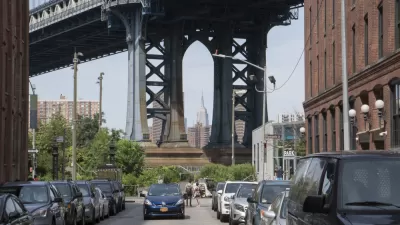Cities have become obsessed with going viral.

If you want to test your city's brand power—that is, its tourism appeal—try searching its name on Instagram. Social media impressions have become a valuable currency for cities seeking to beef up their tourism economies, and to build this particular form of marketing clout, many major cities are investing heavily in outsized, iconic displays designed to function as the perfect backdrop for highly shareable selfies.
"In urban space, our desire to photograph and share virtually everything has spawned a new genre of urban pleasure grounds. They specialize in Instagram bait, a hybrid of ultra-popular immersive art … and increasingly ubiquitous brand activations," Benjamin Schneider writes in CityLab. "These social factories, as they might be called, tone down the art and branding aspects, leaving their social media appeal to do the heavy lifting."
Schneider's definition is part of CityLab's tongue-in-cheek "guide to the #GrammableCity," a collaborative analysis of the photo-friendly public art trends cities are adopting to drum up social media attention and attract ever more tourists. (Among the more fashionable choices: larger-than-life letter sculptures, faux street art in rainbow palettes, and ubiquitous decorative lights.) The writers also explore the phenomenon's broader implications for art, civic institutions, and infrastructure: Cities' obsession with social media tourism, Kriston Capps writes, has grown to the point that some have eschewed crucial city lifelines in favor of flashy new visuals—as when New York chose to outfit MTA bridges with LEDs over funding basic repairs to the crumbling system.
The civic craze over easily replicable, eminently consumable "Instagram bait" isn't likely to wind down in the near future, CityLab authors agree. Rather, as Schneider writes, "Every part of the real world stands to be 'socialized.'"
FULL STORY: Your Entire City Is an Instagram Playground Now

Maui's Vacation Rental Debate Turns Ugly
Verbal attacks, misinformation campaigns and fistfights plague a high-stakes debate to convert thousands of vacation rentals into long-term housing.

Planetizen Federal Action Tracker
A weekly monitor of how Trump’s orders and actions are impacting planners and planning in America.

In Urban Planning, AI Prompting Could be the New Design Thinking
Creativity has long been key to great urban design. What if we see AI as our new creative partner?

King County Supportive Housing Program Offers Hope for Unhoused Residents
The county is taking a ‘Housing First’ approach that prioritizes getting people into housing, then offering wraparound supportive services.

Researchers Use AI to Get Clearer Picture of US Housing
Analysts are using artificial intelligence to supercharge their research by allowing them to comb through data faster. Though these AI tools can be error prone, they save time and housing researchers are optimistic about the future.

Making Shared Micromobility More Inclusive
Cities and shared mobility system operators can do more to include people with disabilities in planning and operations, per a new report.
Urban Design for Planners 1: Software Tools
This six-course series explores essential urban design concepts using open source software and equips planners with the tools they need to participate fully in the urban design process.
Planning for Universal Design
Learn the tools for implementing Universal Design in planning regulations.
planning NEXT
Appalachian Highlands Housing Partners
Mpact (founded as Rail~Volution)
City of Camden Redevelopment Agency
City of Astoria
City of Portland
City of Laramie




























